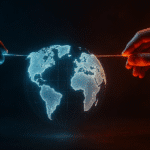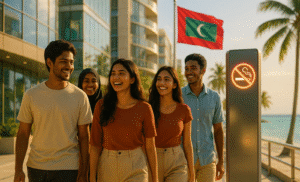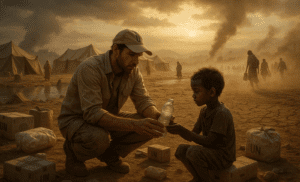Free speech versus censorship has become one of the most defining struggles of modern society, emerging sharply across democracies, authoritarian states, and digital platforms worldwide. The debate intensified through the 2020s as governments, media institutions, and technology companies faced rising misinformation, hate speech, political polarization, and mass digital surveillance. Although the tension between expression and control has existed for centuries, the speed and scale of communication today have turned it into a global tug-of-war. From university protests in the United States to online crackdowns in India, Russia, and China, and new regulatory frameworks in the European Union, the question remains: who decides what can be said, and where is the boundary between protection and suppression?
The roots of free speech can be traced back to Enlightenment thought, which shaped early constitutional rights. The United States enshrined freedom of expression in the First Amendment in 1791, making it a global reference point for unrestricted speech. Europe followed with the European Convention on Human Rights in 1950, allowing speech but permitting restrictions for national security, public order, and public safety. Many countries in Asia, Africa, and the Middle East built their own frameworks, often balancing free expression with cultural, religious, or political priorities. For decades, traditional laws managed print media, broadcasting, and public speeches. However, the rise of the internet and social media created challenges that older legal systems were not equipped to handle.
By the early 2020s, platforms like Facebook, X, YouTube, and TikTok became the new public squares. They allowed unprecedented global participation but also became breeding grounds for disinformation, harassment, and state influence campaigns. Governments responded by pushing for stronger regulations, arguing that unchecked speech could incite violence, manipulate elections, or spread extremist content. Critics countered that such measures often masked political interests, giving states the power to silence journalists, opposition voices, and vulnerable communities. Meanwhile, tech giants themselves became powerful gatekeepers, using algorithms to decide what billions of users would see, promote, or suppress, yet doing so with little transparency.
Across continents, debates grew louder. In the United States, universities struggled to balance student safety with the right to controversial political speech. In Europe, the EU’s Digital Services Act demanded stricter platform moderation, raising fears that vague categories like “harmful content” could lead to over-censorship. India witnessed protests from journalists and activists who criticized new IT rules that allowed the government to order content removal without judicial oversight. China and Russia continued enforcing sweeping censorship systems, controlling keywords, blocking international outlets, and punishing dissent. Each region justified its approach differently, yet all converged on a reality where speech is increasingly monitored, restricted, or influenced by both state and corporate power.
Media institutions have also been caught in this conflict. Independent journalists face shrinking space to report freely, especially when covering protests, corruption, or political abuses. Several countries have seen arrests, intimidation, online harassment campaigns, or “foreign agent” labels used to discredit the press. State-controlled media narratives in some regions have overshadowed independent journalism, affecting public trust and democratic accountability. As a result, societies worldwide are experiencing declining confidence in institutions, greater exposure to propaganda, and rising confusion about which sources are credible.
The effects on citizens are profound. While unrestricted speech can lead to online harassment, hate speech, and community tensions, excessive censorship creates fear, silence, and restricted civic engagement. The challenge is finding a balance that protects public safety without stifling dissent. Protests have erupted globally for both sides of the debate. Activists in Berlin, New York, and Seoul marched for digital freedoms, warning that surveillance laws risk creating a future where governments control citizens’ voices. On the other hand, communities targeted by hate campaigns demanded stronger regulation to prevent violence, discrimination, and real-world harm. This clash reflects a deeper dilemma: people want both safety and freedom, yet achieving both simultaneously remains difficult.
As governments introduce new regulations and companies revise their moderation policies, experts emphasize that transparency, accountability, and clear definitions are crucial. Without them, well-intended laws can easily become tools of political control. Ultimately, the struggle between free speech and censorship is not just a legal battle; it is about the shape of public discourse, the health of democracy, the power of digital platforms, and the identity of societies navigating an era of rapid technological change. The coming years will determine whether societies lean toward expression, regulation, or a fragile balance, one that will influence how people speak, protest, and participate in civic life for generations.



















